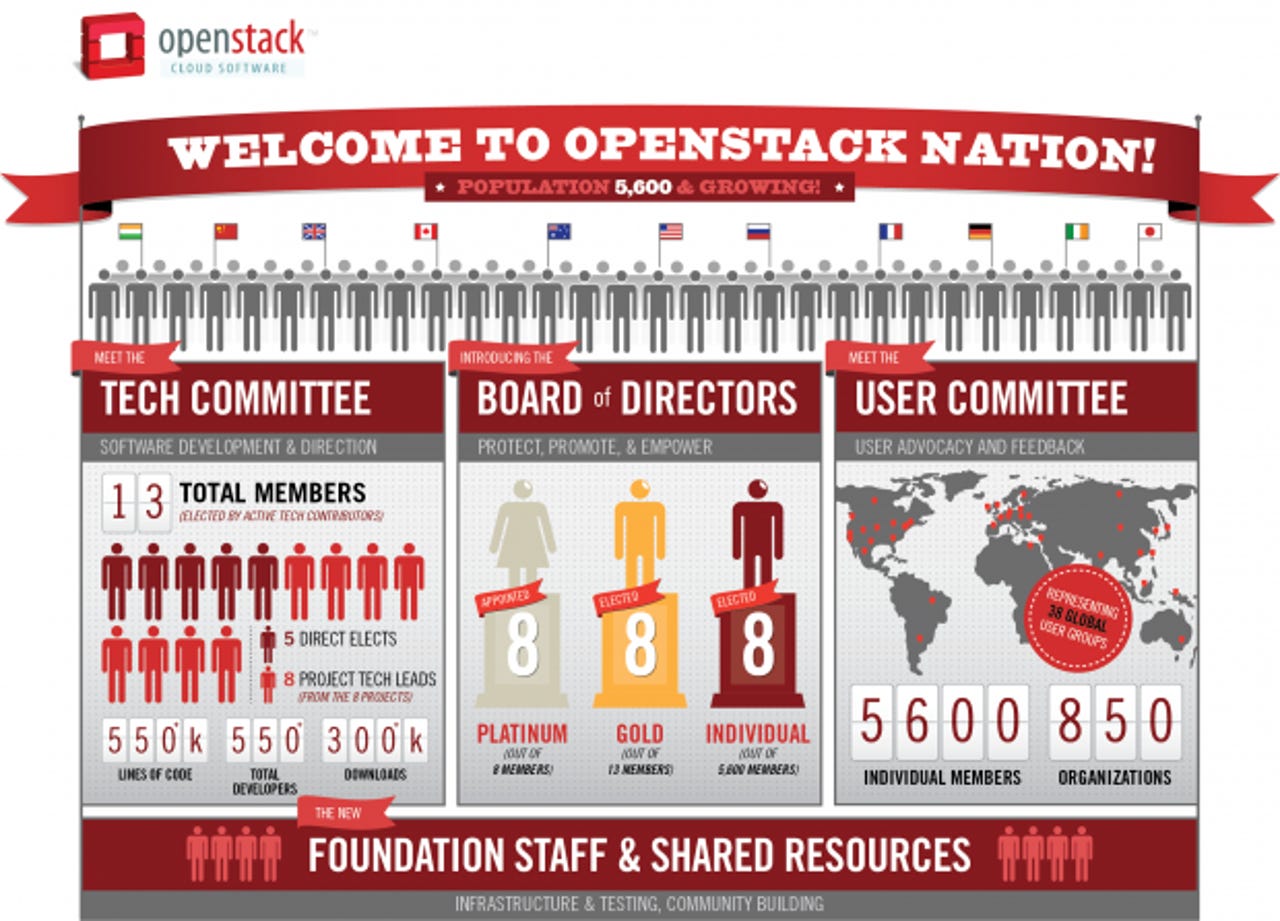Concerns linger about corporate involvement in OpenStack Foundation

The official debut of the independent OpenStack Foundation was welcomed by most as a big step forward to establishing an open cloud but the inclusion of two big league proprietary vendors, namely VMware and Cisco, has raised a few eyebrows.
As the OpenStack Foundation prepares to launch its most advanced open source cloud platform code-named “Folsom” within weeks, the organization held a coming-out day to celebrate its official independence, its ability to attract more than 180 companies and an excess of $10 million in funding and the acceptance of last-minute bigwig members Intel, NEC and VMware.
Today, the foundation announced that it would hire 10 to 12 full-time employees and would have a 24-member Board of Directors as well as a Technical Steering Committee whose combined purpose would be to maintain and grow OpenStack as an independent organization beholden to no one vendor or group of vendors. This approach was pioneered by and approved by OpenStack’s original developers and sponsors, Rackspace and NASA (whose key developers founded Nebula), both which continue to participate in OpenStack as Platinum members.
VMWare joined the foundation as one of 13 Gold members this month. Cisco officially joined as a Gold member earlier this summer but has had developers working on OpenStack for more than one year and a half. The foundation announced today that Cisco cloud chief Lew Tucker has been named vice chairman of the 24-member OpenStack Board of Directors.
Some worry that such corporate funding and hefty participation in the open source organization by would-be OpenStack rivals would undermine the platform's adoption in the enterprise sector.
Boris Renski of Mirantis, a Gold Member of OpenStack, is skeptical about VMware's participation but says nothing about Cisco. He was very public about his concerns in a Sept. 11 blog posted on the Mirantis web site, which generated much industry discussion.
"VMware is trying to undermine OpenStack," said Renski, CMO and co-founder of Mirantis, an Openstack system integrator that has done work for Webex, GAP, Internap, PayPal and NASA. "You see enterprise adoption beginning but cloud adoption is not there yet."
It’s not unusual for big proprietary vendors to hitch their wagon to open source projects. In fact, as open source use expands, it’s become virtually imperative for any sane proprietary vendor to accede to project mentality. Microsoft, which once called Linux a cancer, actively supports Linux these days and even established a separate subsidiary called Open Technologies to work with open source communities.
Citrix, which purchased Cloud.com and tried to establish it as an industry standard, instead donated that code now known as CloudStack to the Apache Software Foundation as it became clear that OpenStack was gaining steam and that customers were not going to allow any proprietary vendor or group of vendors to assume control over the cloud. Both stacks are now available udner the Apache 2.0 license.
For some, the participation of VMware and Cisco – whose proprietary platforms face direct competition from the OpenStack cloud platform -- is simply a reflection of the immense power open source now yields in the IT industry.
The Platinum members of OpenStack, after all, are the biggest backers of open source and Linux -- IBM, Red Hat, SUSE, Canonical and HP.
SUSE's Alan Clark, Director of Industry Initiatives, Emerging Standards and Open Source at SUSE, was elected Chairman of the Board. Cisco's Tucker was appointed vice chairman.
[Editor's note: Cisco has had developers contributing code to OpenStack for more than a year and a half, and its involvement is not recent, the OpenStack Foundation told this blogger. This original post said Cisco's involvement was fairly recent. ]
For its part, the OpenStack Foundation said that its well thought out charter, which includes a 24-member Board of Directors, a fully elected Technical Steering Committee, a soon-to-be created user committee, and full-time staff of between 10 and 12 employees will ensure that no one vendor or group of vendors can "subdue" OpenStack in either the public cloud or private cloud realm.
"OpenStack has experienced tremendous growth and traction in just two years, so we're not surprised that these types of comments occasionally come up," said Jonathan Bryce, executive director of OpenStack, in an email response. "That being said, this type of criticism is really hollow. You simply don't achieve that type of growth and momentum without a diverse community like ours that is working together for the same mission, vision and goals."
Still, corporate participation in open source organizations must continue to be scoured closely. I often wonder how far MySQL would have gone had Oracle not assumed control over it. (This is not to say I think Oracle has undermined MySQL. I just wonder.)
VMware's interest in OpenStack, which is indeed a rival cloud platform, ought to be a concern. And VMware's purchase of Nicira, along with Cisco's new embrace of OpenStack, should also be a concern, particularly in light of the debut of "Quantum" networking in the next generation version of OpenStack.
This is the quote Mirantis' Renski used to begin his insightful post:
"The supreme art of war is to subdue the enemy without fighting." - Sun Tzu
There's no overt evidence to say that either company is trying to "subdue" OpenStack and more evidence to suggest that both companies realize they must cooperate with OpenStack or perish. But their respective participation in and power tracking within the new foundation -- along with other would-be rivals -- must be monitored, in keeping with reality.
Jonathan Bryce, executive director of the foundation, hails appropriately from Rackspace as the co-founder of Rackspace Cloud (which will also compete against VMware). As the cloud wars heat up, he'll have his hands full. But it appears the foundation has been constructed (see below) and fortified to meet any political or technical challenge now or on the horizon.
